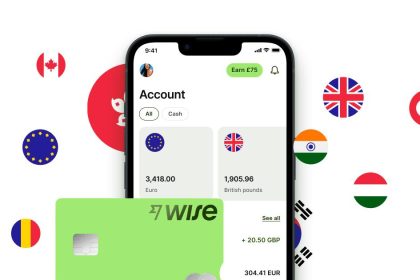Meet Kiah. Kiah is a 25-year-old freelance writer and graphic designer who spends most of her time on her smartphone. She, like the average digital consumer, spends at least 3 hours everyday on social networking and instant messaging. Kiah loves watching videos on YouTube and scrolling through her Twitter timeline, laughing and reacting to what she sees.
Sometimes, she exchanges personal messages with friends. Sometimes, she just wants to interact with brands that she loves.
People like Kiah love convenience and cherish speed. They cannot stand slow internet connectivity and are irked by sluggish customer service. They want things done quickly and with ease because that’s what they’re used to.
Kiah has bills to pay and money to make. She has to renew the monthly Internet subscription on her phone and renew the monthly subscription for some of her most used apps. She has to receive payment from her clients and sometimes has to transfer money to peer writers or family.
In the past, Kiah would have walked into a banking hall to conduct these transactions. Then came the Internet. She was soon able to send and receive money through payment platforms with complicated user interfaces. Soon enough though, these platforms adopted simpler interfaces–all these through different waves of Financial Technology (FinTech).
The more advanced technology has become, the deeper Kiah’s need for convenience has become and this reflects in other areas of her life.
For example, it once was normal for her to type in the URL to her favourite websites on her browser. But with the advent of social media came the preeminence of content aggregation. There was no longer a pressing need for her to visit web addresses directly. Her social media feed was optimised so that the content she found most interesting landed directly at her feet.
This way, she spends more time than she used to on social media, interacting with friends, brands and others like her. This highlights Kiah’s generation’s love for convenience.
Seeing how much Kiah loves social media, it would not be out of place to include features that enable her perform monetary transactions directly on social media. What if she could just start a conversation with an AI-powered channel that gives her the option to renew her Internet subscription and pay all her bills? What if she could just send money within Facebook, Twitter, Skype, and WhatsApp?
Companies like Facebook have been working to incorporate this in all their apps for some years now. AliPay and WeChat have already made significant progress. Although it is a work-in-progress, the possibilities are both endless and exciting.
Users can just open up apps and interact with them like they do their fellow human beings. As we make advances with Natural Language Processing, these conversational payment features will only get better. The more users make use of the features, the better the platforms get at understanding human thought processes because they are constantly learning through AI.
Apart from the tech restrictions that have not let us fully understand how conversational payments can work, there are also regulation restrictions. Banking and payments regulation are notoriously strict. There will need to be more acceptance from policy makers around the world for this technology to blow up the way it should.
Kiah is excited by the prospect of conversational payments. She thinks that the more features like this are integrated into social media, the less harmful critics will say it is.
She believes that social media is a neutral tool that can be shaped positively or negatively depending on the use of the technologies it supports. The ability to make payments within apps is definitely a step in the right direction.
Interesting Update:
According to Quartz, Kenya mobile network operator Safaricom is launching a platform that will allow its customers to send and receive money while they chat. The messaging service, known as Bonga (which means “to chat” in colloquial Swahili), was partially-launched on April 26 for select users on Android devices. You can get more information here.
When writing this piece, I imagined social media or messaging platforms incorporating payments, it is VERY interesting to see a payment platform diving into social networks instead. Cheers to Safaricom, we’ll be watching.
About The Author
Kelechi Udoagwu is an Accra-based Nigerian tech entrepreneur/consultant, presenter, advocate, student and writer.
She is the Co-founder of Skrife and produces and hosts the web series – Tech Roundup with Bitnode. She was also the Communications Director at MEST Africa.











